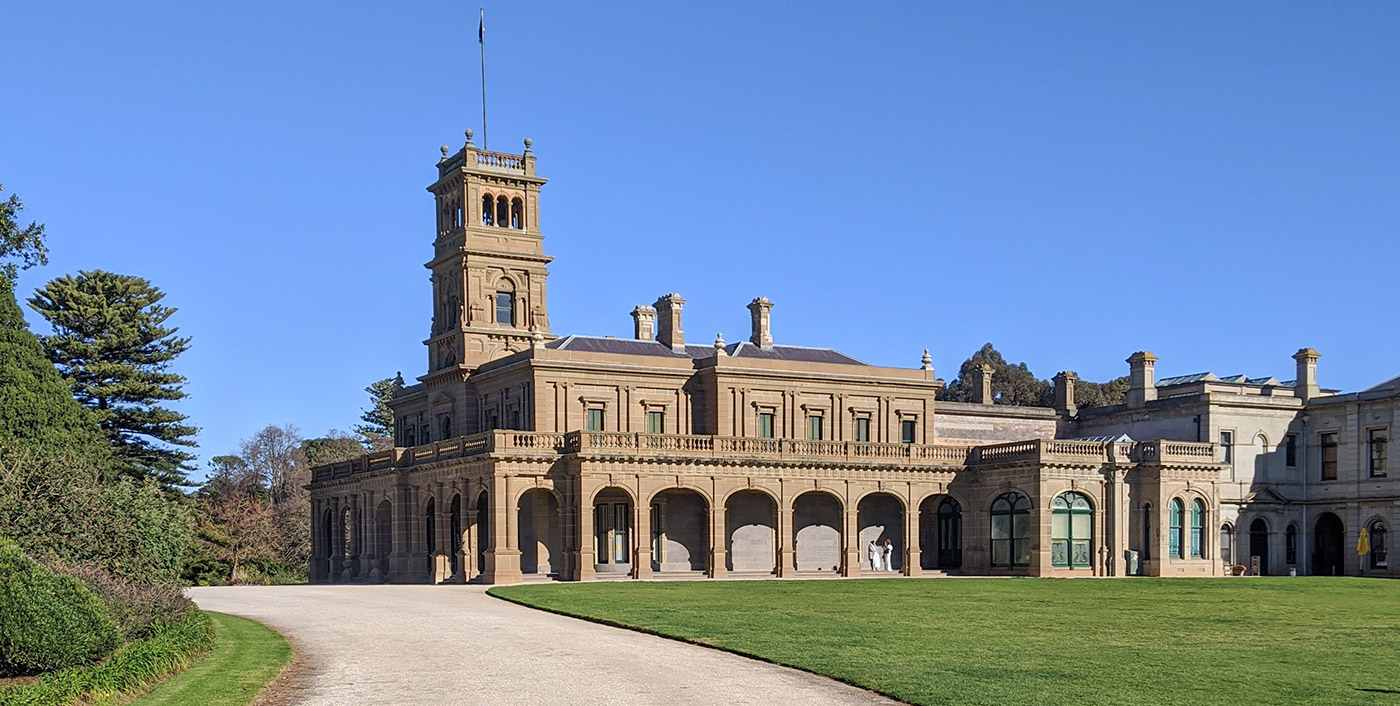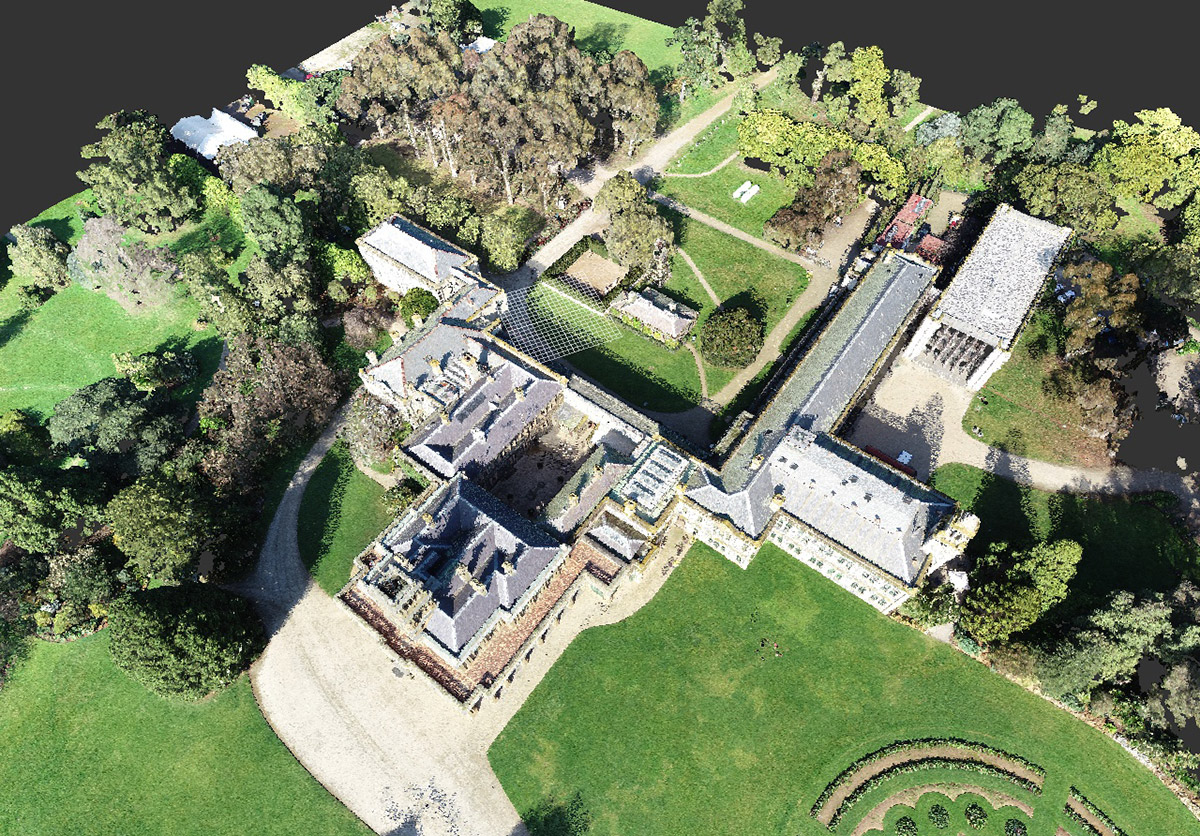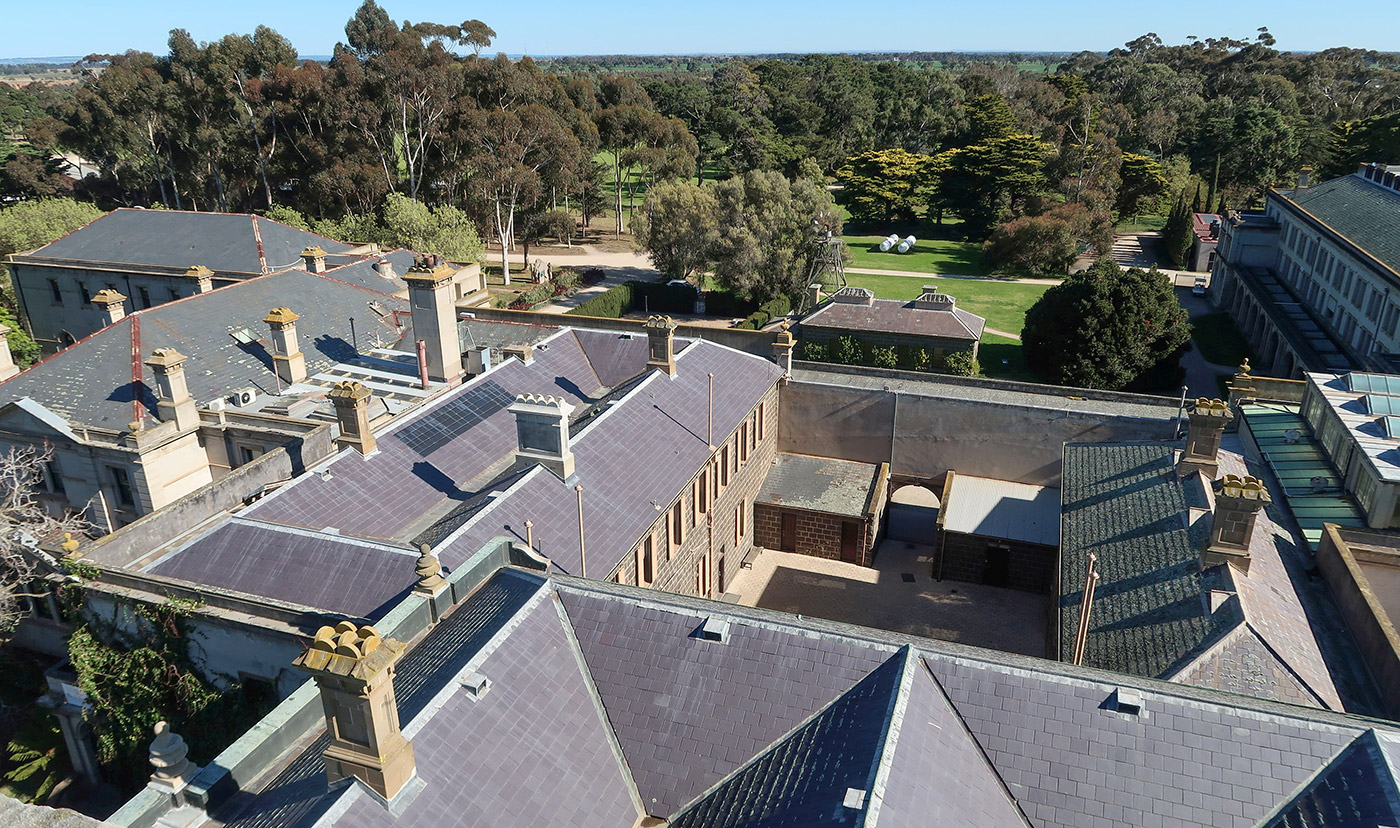Werribee Mansion was constructed in the 1870s and is considered one of the country’s “grandest and most architecturally sophisticated” houses, particularly for its sandstone facades.
Our first encounter was in 1985 when we undertook conservation analysis for the wider Werribee Park. Since then we have worked on the stonework, stormwater systems and interiors — but finance is always a challenge for large-scale heritage complexes.

Werribee Mansion (main building) / photo : Lovell Chen
Following our 2019, 2021 and 2023 condition reports identifying priorities, Parks Victoria has earmarked $6m from a wider maintenance grant, principally for weather-defensive works set to begin later this year. The principle focus of the 2013 report was the roof, or more accurately, all the roofs, as the complex includes a number of wings of differing ages and construction materials.

Point cloud image of the Mansion, showing the extent of associated roofs
A scope of works was developed that would be affordable under the current grant allocation. It includes making the roofs watertight, rainwater goods compliance and roof access upgrades, plus localised urgent and priority facade works. The aim is to protect the heritage interiors from water ingress and help the buildings handle the 100-year weather events now likely to happen more often.

The roofs of the associated buildings — existing conditions / photo : Lovell Chen
Werribee Mansion was constructed between 1874 and 1877 by sheep graziers Thomas and Andrew Chirnside. They had already built a number of bluestone buildings on the land in the 1850s and 60s, most of which survive, and a bluestone homestead (1865). The dissolution of the estate started in 1893, with the sale of some of the land. In 1922 the Catholic Church purchased a scaled-down Werribee Park, converting the Mansion to a seminary and adding to the complex. The Victorian Government acquired the property in 1973, creating a public park, and Parks Victoria has managed the Mansion since 1996.
Werribee Mansion is located on the traditional lands of the Bunurong people of the Kulin Nation.
Quote attribution : National Trust of Australia


